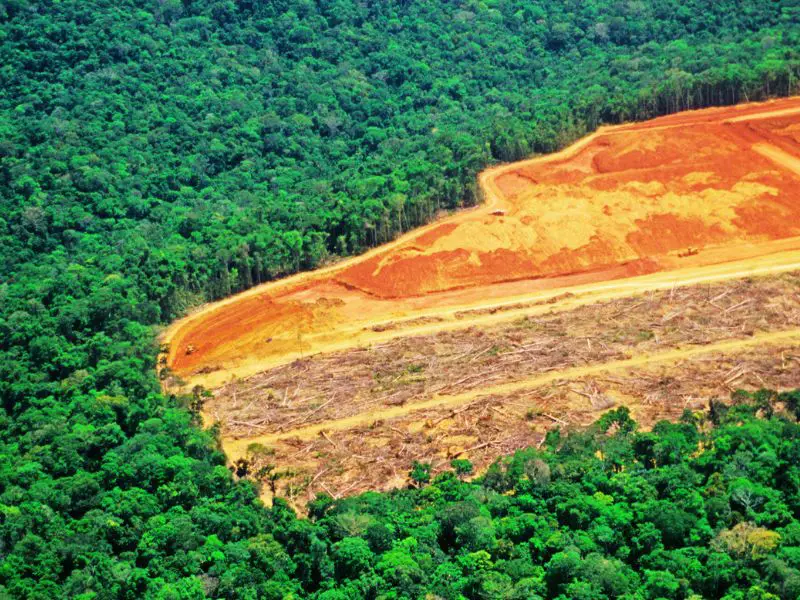Get ready for a meaty conversation. This article uncovers how our love for meat affects our health and planet. We’ll explore the environmental footprint of meat consumption and its health impacts and offer tips for more sustainable and healthy eating habits. So, let’s tuck in and explore together.
Meat Consumption and Its Global Impact
Understanding Meat Consumption
Meat consumption has been an integral part of the human diet for centuries. It is an abundant source of protein, vitamins, and minerals essential for a healthy body. However, the impact of meat consumption on the environment and human health has come under scrutiny in recent years.
The consumption of meat varies widely across the globe. In industrialized nations, meat consumption is generally higher due to higher income levels. People in developing countries lack access to meat due to financial restraints.

Global Trends in Meat Consumption
According to the Food and Agriculture Organization (FAO), global meat consumption has increased steadily over the past few decades. In 2023, meat consumption is projected to be 14% higher than the average consumption in 2021 and 2022, demonstrating a notable rise in meat consumption over the past two years.

The increasing global population and rising income levels in developing countries are the primary drivers of this trend.
The impact of meat consumption on the environment is significant. Livestock farming is responsible for substantial greenhouse gas emissions contributing to global warming. Moreover, meat production requires a considerable amount of land and water, which can lead to deforestation and water scarcity.
Environmental Impact of Meat Consumption
Meat consumption has a significant impact on the environment. The effect on the environment varies directly with how the livestock is managed. In this section, we will discuss the environmental impact of meat consumption in terms of greenhouse gas emissions, land and water use, biodiversity, and deforestation.
1. Greenhouse Gas Emissions
Consuming meat creates a lot of greenhouse gases like carbon dioxide, methane, and nitrous oxide. These gases build up in our atmosphere, trap radiation, and stop heat from leaving, causing the Earth to get hotter and disrupt the global climate.
Having so many farmed animals is one of the main reasons for these gas emissions. Animals like cows and sheep digest their food in a way that makes methane and nitrous oxide. These gases are much better at trapping heat than carbon dioxide. Methane is 27 to 30 times stronger, and nitrous oxide is 273 times more vital over 100 years.
Greenhouse gases also come from making animal food, moving animals around, and slaughtering.

2. Land and Water Use
Land
Certain soil types are more suitable for growing grass than crops intended for human consumption, and these soils are often not ideal for traditional farming practices. This is where cows come in handy – they can eat this grass, converting land that might otherwise be unproductive into a food source.

However, the land used for animal farming is wider than these areas. A significant portion, about 80%, of all farmland is dedicated to meat production. This includes the pastures where animals graze and the land used to cultivate their feed crops.
Water
The animal farming industry uses a lot of water for raising and killing animals, though many people may not realize it.

A large part of this water is used for growing food for these animals. Nearly 20 percent of the world’s freshwater is used to produce this feed. Killing the animals also uses a lot of water. For instance, one chicken slaughterhouse in California uses between 4 and 5 million gallons of water daily.
Compared to meat, plants need much less water. For example, you need six times more water to get 1 gram of protein from beef than from beans.
Using so much water can cause problems. It can harm water life, cause more droughts, make it harder to find clean water and make the soil less rich.
3. Biodiversity and Deforestation
Meat production demand leads to extensive deforestation, like in the Amazon, where 80% of deforestation stems from cattle ranching. This annually releases 340 million tons of carbon into the atmosphere.

Areas cleared for animal agriculture often housed diverse species. Their destruction results in significant biodiversity loss, contributing to 60% of today’s total. This exacerbates climate change and weakens ecosystems’ capacity to adapt to it.
Health Impact of Meat Consumption
Meat is a universal food choice for many people but it can significantly impact your health. In this section, we will explore the nutritional aspects of meat and the health risks associated with meat consumption.
Nutritional Aspects of Meat
Meat is an excellent source of protein, which is essential for building and rebuilding tissues in your body. It also contains vital nutrients such as iron and vitamin B12.
However, meat’s nutritional content can vary depending on the type and cut of meat.
Red meat, such as beef, lamb, and pork, is high in saturated fat and cholesterol, increasing your risk of heart disease and other health problems. On the other hand, white meat, such as chicken and turkey, is lower in fat and cholesterol, making it a healthier choice.
Poultry and dairy products are also good protein sources and other essential nutrients. Selecting lean cuts and limiting your processed meat intake is essential if you eat meat.
Health Risks Associated with Meat Consumption
While meat can provide essential nutrients, it can also have adverse health effects. Eating too much red and processed meat heightens the risk of cancer.
In addition, consuming large amounts of meat can contribute to other health problems, such as obesity, type 2 diabetes, and cardiovascular disease. This is due to the high levels of saturated fat and cholesterol in meat.
Limiting your intake of red and processed meat is recommended to reduce the negative impact of meat consumption on your health. Instead, opt for lean cuts of white meat, fish, and plant-based protein sources.
Meat Industry Environmental Impact Statistics
- Every year, the food production sector raises and slaughters over 88 billion terrestrial animals. The industry of animal farming accounts for a minimum of 16.5 percent of the world’s greenhouse gas emissions.
- While the environmental footprint of animal agriculture is massive, it contributes only 18 percent of the global food production’s caloric output.
- Analyzing the specific gases, 44 percent of livestock emissions are methane, while 29 percent is nitrous oxide.
- Over one-third of the Earth’s habitable land is currently under livestock farming.
- Water usage in meat production varies considerably depending on the animal, with 5,000 to 20,000 liters of water required to produce just one kilogram of meat.
- The production of one kilogram of beef necessitates explicitly using 25 kilograms of grain and a staggering 15,000 liters of water.
Sustainable Alternatives and Dietary Shifts
If you are concerned about the impact of meat consumption on the environment, there are several sustainable alternatives and dietary shifts that you can make.
By reducing your consumption of animal-based foods and increasing your intake of plant-based foods, you can help reduce greenhouse gas emissions, preserve natural resources, and promote animal welfare.
Plant-Based Diets
Plant-based diets are gaining popularity as a sustainable alternative to meat-based diets. Vegetarian and vegan diets, in particular, have been shown to have a lower environmental impact than diets that include meat. Plant-based diets rely on nature’s food, a more sustainable way of eating.

Plant-based diets are rich in protein, which is essential for building and rebuilding tissues in the body. You can get protein from various plant-based sources, including legumes, nuts, seeds, and whole grains. Different plant-based foods can also provide a broad scope of vitamins and minerals essential for good health.
Reducing Meat Consumption
Another way to reduce the impact of meat consumption is to eat less meat. You can start by decreasing the meat you eat each week and replacing it with plant-based alternatives, such as swapping meat for legumes or choosing a vegetarian option when eating out.
Reducing your meat consumption can also have health benefits. Studies have shown that diets high in red and processed meats are linked to a heightened risk of heart disease, stroke, and certain types of cancer. Reducing your consumption of these meats can improve your overall health and well-being.
In addition to reducing your meat consumption, you can also choose more sustainable options when you eat meat. For example, you can choose poultry production that uses sustainable farming practices or opt for certified organic or grass-fed meat.
Author’s Note
In a nutshell, overeating meat can be tough on our bodies and our planet. It can cause health problems and harms nature in many ways. But hey, we can do something about it! By eating more veggies and less meat or choosing sustainably raised meat, we can stay healthy and help our planet. So let’s make the switch; every little bit helps!
Green thumb, meet delicious discoveries! Explore the easiest vegetables to grow, vegan alternative protein sources, and healthy snacks. From garden to plate, embrace a nourishing and sustainable lifestyle with these delectable choices!

